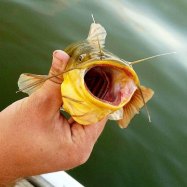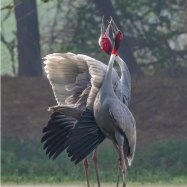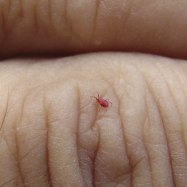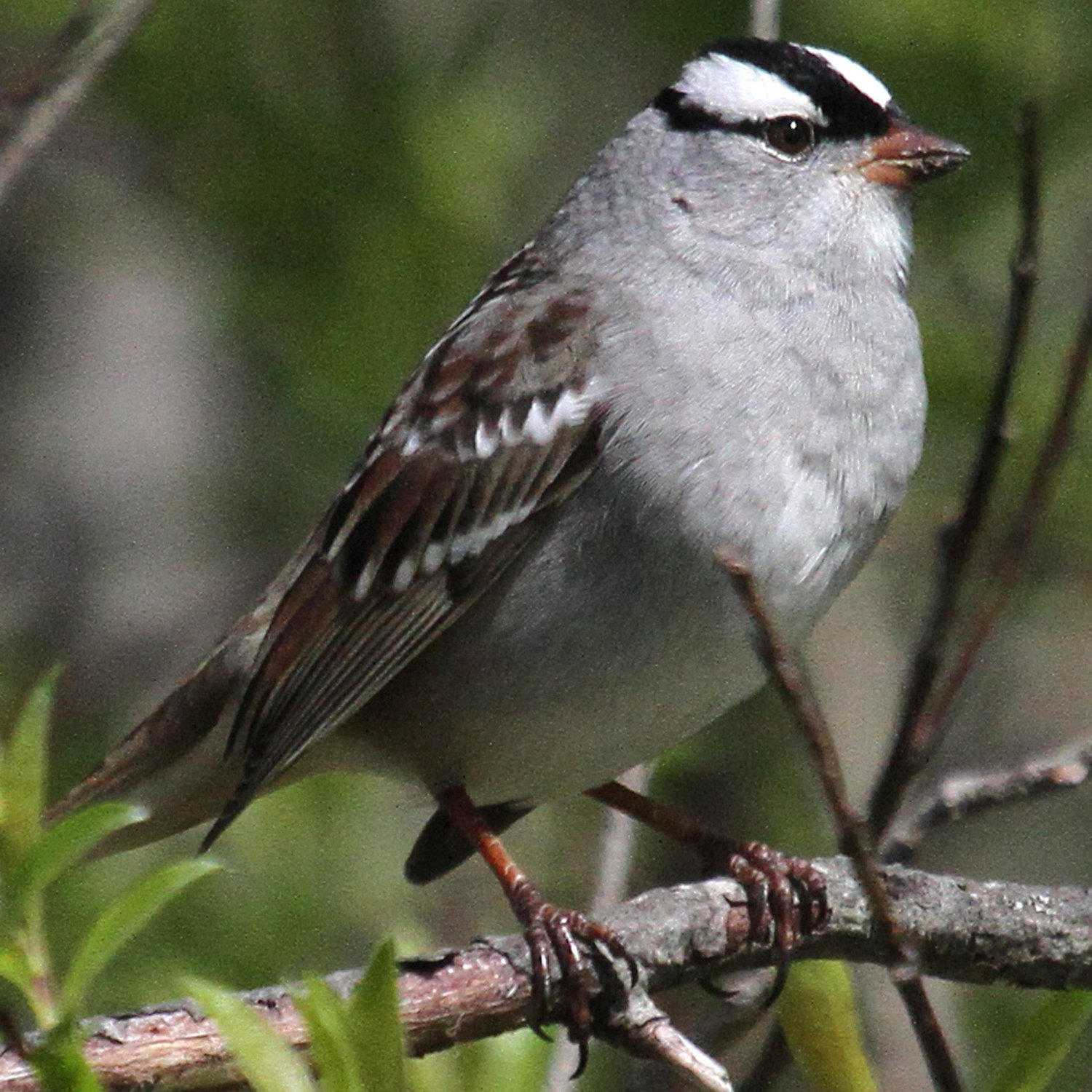
White Crowned Sparrow
5.9-7.9 inches (15-20 cm)
The White-Crowned Sparrow is a small but plump bird with a distinctive white crown and black and white striped head. Found across North America, they have a sweet, melodic song that can be heard in both urban and rural areas. Keep an eye out for this charming little bird in your backyard or local park! #WhiteCrownedSparrow #NorthAmericanBirds #NatureLovers
Animal Details Summary:
Common Name: White Crowned Sparrow
Kingdom: Animalia
Habitat: Grasslands, shrublands, and open woodlands
The Small but Mighty White Crowned Sparrow: A Common Yet Fascinating Bird
Have you ever taken a walk in a grassland or open woodland and heard a sweet, melodic song seemingly coming from nowhere? Chances are, it was a White Crowned Sparrow (Zonotrichia leucophrys). This small yet mighty bird is a common sight and sound across North America, but its unassuming appearance belies its fascinating and unique characteristics.As its scientific name suggests, the White Crowned Sparrow belongs to the class Aves, specifically the order Passeriformes, which includes more than half of all bird species. Within this order, it is a member of the Family Passerellidae, also known as New World Sparrows White Crowned Sparrow. These birds are found across the United States and parts of Canada and Mexico, making the White Crowned Sparrow a widespread and adaptable species.
One of the most distinctive features of the White Crowned Sparrow is its coloration. As its common name suggests, it has a white crown on its head, but this is not visible on all individuals. Some may have a brown or gray crown instead, and this variation can be seen within a single population. The rest of its body is primarily brown and gray, with white stripes on its head and breast. This coloration helps the bird blend in with its surroundings, making it less vulnerable to predators.
In terms of size, the White Crowned Sparrow is relatively small, with a plump body, short tail, and long legs. It measures between 5.9-7 Warthog.9 inches (15-20 cm) in length and weighs between 0.71-1.06 ounces (20-30 grams). Despite its small size, this bird is a mighty and resilient creature, adapting to various habitats and thriving in different environments.
Speaking of habitats, the White Crowned Sparrow is a highly adaptable species, with a habitat range that includes grasslands, shrublands, and open woodlands. These birds have also been known to make their homes in urban areas, such as parks and gardens. They are commonly found in areas with a mixture of tall grasses and shrubs, as these provide ample shelter and food sources. The birds also prefer open areas, as they are ground foragers and need enough space to search for food.
As omnivorous birds, the White Crowned Sparrow's diet consists of both plant and animal matter. They primarily feed on insects during the summer months, and they rely on seeds and fruits during the colder months when insects are scarce. This flexibility in diet is one of the reasons for their adaptability and widespread distribution.
Despite being a common sight in many areas, the White Crowned Sparrow's breeding habits are not extensively studied. They are monogamous birds, with pairs bonding for an entire breeding season. The male displays a unique courtship behavior of raising and lowering his wings while singing to attract a mate. The female then chooses a suitable nesting site, which is often on the ground or close to the ground, concealed by dense vegetation. The female builds the nest, and both parents share the responsibility of incubating and caring for the eggs and chicks.
The White Crowned Sparrow may be small and common, but they have a unique and complex song. They are known for their rich, melodic notes that are easily recognizable once you become familiar with their sound. Interestingly, this bird has a dialect, and populations in different areas may have different variations of their song. They also have a repertoire of different songs, some for attracting mates and others for warning of potential dangers.
Another interesting fact about the White Crowned Sparrow is its ability to navigate vast distances during its annual migration. These birds breed in North America during the summer months and then make a significant journey to their wintering grounds in Mexico and parts of Central America. This journey can span more than 2,000 miles, and the birds use a variety of cues, including the Earth's magnetic field, to navigate.
The White Crowned Sparrow is a resilient bird, able to adapt to various environments and thrive in different conditions. However, like many other bird species, they face several threats and challenges. Habitat destruction due to human development is a significant threat to their survival, as it reduces the availability of suitable nesting and foraging sites. Additionally, pesticide use, predation by domestic and feral cats, and collisions with buildings and windows also contribute to their declining population numbers.
Fortunately, efforts are being made to protect and conserve these birds. The White Crowned Sparrow, like many other bird species, is a protected species in the United States, making it illegal to harm or disturb them in any way. Many organizations and individuals are also working towards preserving their habitats and educating the public about ways to coexist with these beautiful creatures.
In conclusion, the White Crowned Sparrow may seem like an unassuming and ordinary bird, but it is truly a fascinating and unique species. From its diverse coloration to its complex song and incredible migration abilities, this bird is full of surprises. However, like many other bird species, it faces several threats to its survival, making it more vital than ever to appreciate and protect these small but mighty creatures. So, next time you hear a sweet, melodic song in a grassland or open woodland, take a moment to appreciate the small but mighty White Crowned Sparrow.

White Crowned Sparrow
Animal Details White Crowned Sparrow - Scientific Name: Zonotrichia leucophrys
- Category: Animals W
- Scientific Name: Zonotrichia leucophrys
- Common Name: White Crowned Sparrow
- Kingdom: Animalia
- Phylum: Chordata
- Class: Aves
- Order: Passeriformes
- Family: Passerellidae
- Habitat: Grasslands, shrublands, and open woodlands
- Feeding Method: Omnivorous
- Geographical Distribution: North America
- Country of Origin: United States
- Location: Across the United States and parts of Canada and Mexico
- Animal Coloration: Brown, gray, and white
- Body Shape: Small, plump body with short tail and long legs
- Length: 5.9-7.9 inches (15-20 cm)
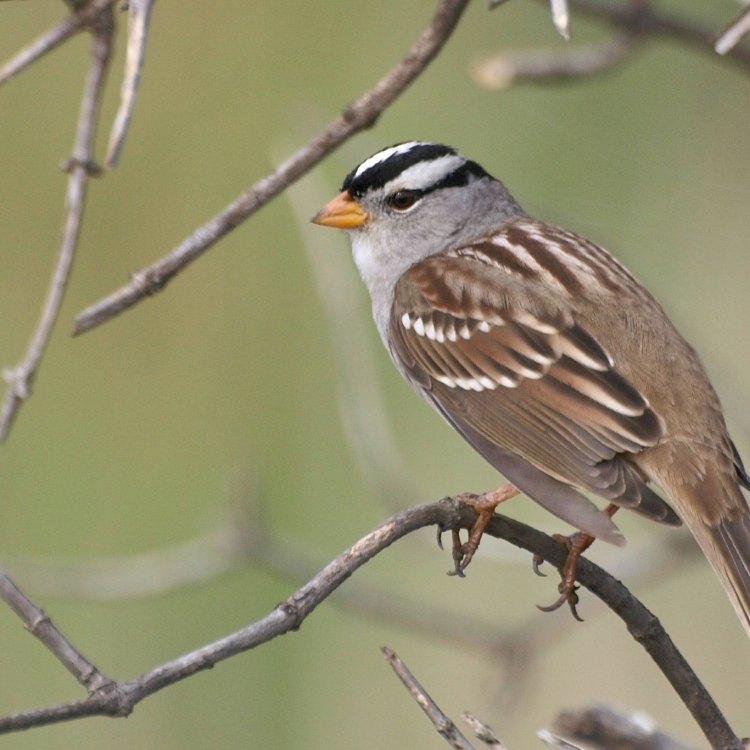
White Crowned Sparrow
- Adult Size: Small
- Average Lifespan: 4-7 years
- Reproduction: Monogamous
- Reproductive Behavior: Builds cup-shaped nests in low vegetation
- Sound or Call: Distinctive and melodious song
- Migration Pattern: Migratory
- Social Groups: Usually seen in small flocks
- Behavior: Active and agile
- Threats: Habitat loss and climate change
- Conservation Status: Least Concern
- Impact on Ecosystem: Seed dispersal
- Human Use: Birdwatching, research
- Distinctive Features: White crown on head
- Interesting Facts: Individuals have unique song variations
- Predator: Birds of prey, snakes, and mammals
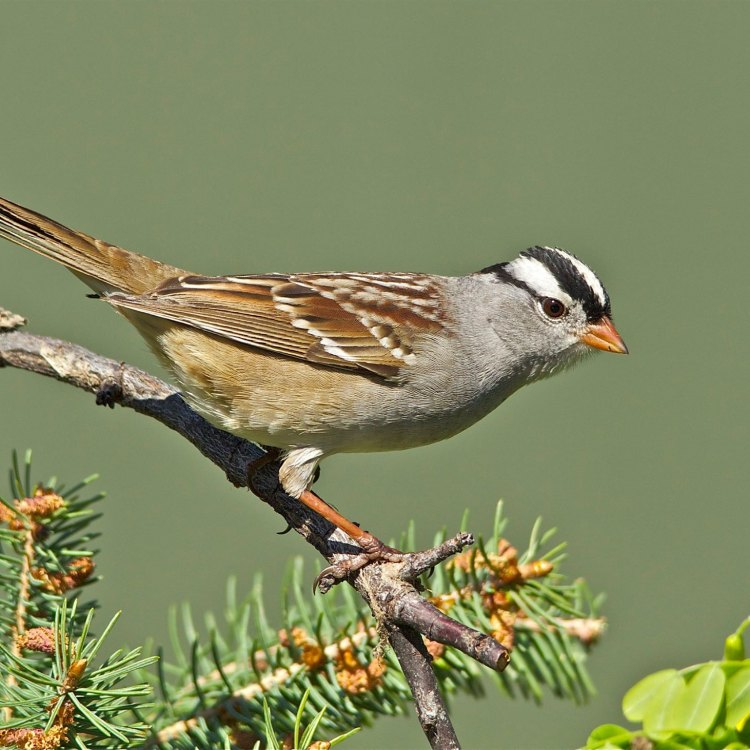
Zonotrichia leucophrys
The Melodious Songbird: All About the White Crowned Sparrow
When you think of sparrows, you may picture small, brown birds that are often overlooked in the grand scheme of the avian world. However, one particular sparrow species stands out with its unique features and delightful songs – the White Crowned Sparrow. This small bird may not be as flashy as a peacock or as majestic as an eagle, but it has its own charm and importance in the ecosystem.The White Crowned Sparrow (Zonotrichia leucophrys) is a small bird that can be found in North America PeaceOfAnimals.Com. It is considered to be one of the most widespread and abundant bird species in the continent, with an estimated population of 130 million individuals. They are also one of the most studied birds due to their interesting behaviors and distinct features.
A Little Bird with a Big Voice
One of the first things you may notice about the White Crowned Sparrow is its melodious song. In fact, it is known to have one of the most beautiful and complex songs among all North American birds. Their song is typically described as a clear, whistled tune with a series of notes that may vary in pitch and tempo. Each individual sparrow has its own unique variations in its song, making it easily recognizable to other sparrows.The males are known to sing throughout the breeding season to attract a mate and defend their territory. They also have an interesting way of practicing their songs, often singing at night when predators are less active. This also helps them avoid competition from other birds during the day Whinchat. The females, on the other hand, have a simpler song and use it to communicate with their mates and signal danger.
A Brief Life Span, but a Monogamous Union
The White Crowned Sparrow is a small bird that measures about 6-7 inches in length and weighs around 1 ounce. Despite its small size, it has a relatively long lifespan compared to other sparrows. On average, they can live up to 4-7 years in the wild. Unfortunately, their numbers can be significantly reduced due to environmental factors such as habitat loss and climate change.These sparrows are known to have a monogamous breeding behavior, meaning they mate for life. Once a male and female sparrow pair up, they will remain together until one of them dies. They will then find a new mate in the following breeding season. This reproductive behavior is important in maintaining a stable population of White Crowned Sparrows.
Building Homes in Low Vegetation
During the breeding season, White Crowned Sparrows engage in another interesting behavior – building their nests. They are known to build cup-shaped nests made of twigs, grass, and other plant materials. They are usually built on the ground, hidden under low vegetation such as shrubs or grass. This helps protect the nest from potential predators and also provides a warm and secure environment for the eggs.The female usually lays 3-7 eggs, which she will incubate for about 11-13 days. Once the eggs hatch, both parents will work together to feed and care for the chicks until they are ready to fledge and leave the nest after 9-12 days.
Migratory Birds in Small Flocks
White Crowned Sparrows are considered to be migratory birds, meaning they travel to different locations depending on the season. During the breeding season, they can be found in the northern parts of North America, including Canada and Alaska. But as the colder months approach, they will migrate to the southern parts of the continent, particularly in the United States and Mexico.During migration, these sparrows can be seen in small flocks consisting of a few dozen individuals. They will often stop at various locations to rest and refuel before continuing their journey. This is an important behavior as it helps them conserve energy and reach their destination safely.
A Sociable and Active Species
White Crowned Sparrows are social birds and can be seen in small groups, usually consisting of family members. They are active and agile, constantly foraging for food on the ground. They have a diverse diet that includes seeds, insects, and berries. This makes them an important component in the ecosystem as they help disperse seeds and control insect populations.These sparrows are known for their hopping behavior on the ground, which makes them easy to spot and identify. They also have a distinctive white stripe on their head, hence their name, making them stand out among other sparrows. Interestingly, the male's crown will turn orange during the breeding season, while the female's will remain yellow.
A Threatened Species
Despite their abundance and widespread distribution, the White Crowned Sparrow is facing threats that could potentially endanger their population. Habitat loss, especially due to urbanization, is one of the main reasons for their declining numbers. As more land is cleared for development, these birds lose their natural feeding and breeding grounds, making it difficult for them to survive.Climate change is also a big threat to these birds, as it affects their food sources and nesting sites. With changing weather patterns, their migration timing may also be disrupted, putting them at risk of harsh weather conditions. It is essential to address these threats and protect the White Crowned Sparrow to ensure their continued existence in the wild.
The Impact of White Crowned Sparrows on the Ecosystem
White Crowned Sparrows may be small, but their presence has a significant impact on the ecosystem. As mentioned earlier, they help disperse seeds, which is important for plant growth and diversity. They also play a role in controlling insect populations, which can have a cascading effect on the food chain.Moreover, these birds are also important indicators of the overall health of the environment. As they are sensitive to habitat changes, monitoring their population and behaviors can provide valuable insights into the impact of human activities on the ecosystem.
Human Use and Appreciation
The White Crowned Sparrow may not be as popular or iconic as other bird species, but they are still appreciated by many. Birdwatchers and bird enthusiasts often include them in their list of birds to observe and document. Their unique songs and distinctive features make them a joy to watch and listen to in the wild.Aside from birdwatching, White Crowned Sparrows are also used for research purposes. Scientists and researchers study their behaviors, migration patterns, and population dynamics to better understand their role in the ecosystem. This information can also aid in conservation efforts and help protect their population in the long run.
A Final Note on the White Crowned Sparrow
In conclusion, the White Crowned Sparrow may be small, but it has distinctive features and interesting behaviors that make it unique and important in the avian world. As a migratory and monogamous species, they face threats such as habitat loss and climate change, which can have long-term impacts on their population. It is crucial to take action and conserve the environment to ensure the survival of these beautiful birds for future generations to appreciate. So, next time you see a small, brown bird with a white crown, take a moment to appreciate its beauty and importance in the ecosystem.
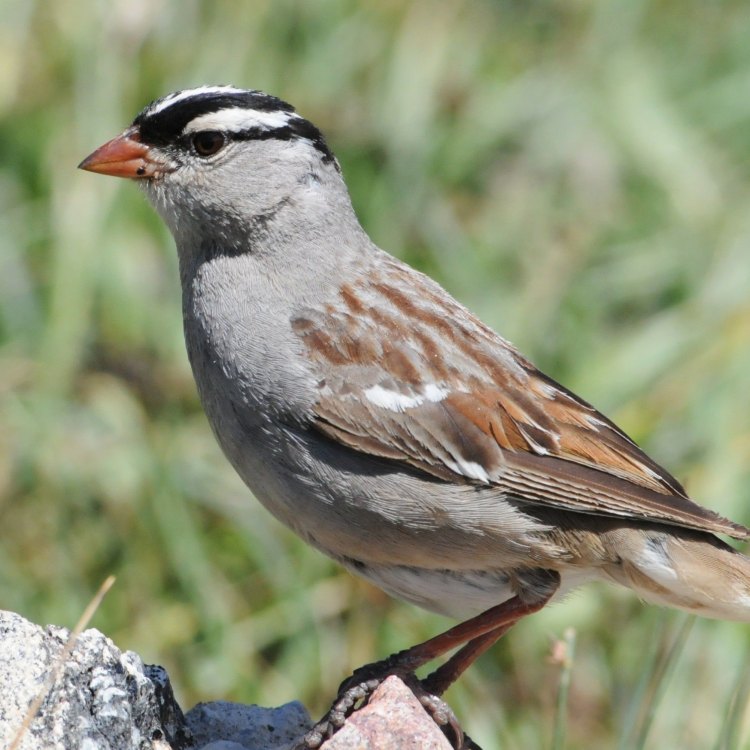
The Small but Mighty White Crowned Sparrow: A Common Yet Fascinating Bird
Disclaimer: The content provided is for informational purposes only. We cannot guarantee the accuracy of the information on this page 100%. All information provided here may change without prior notice.


